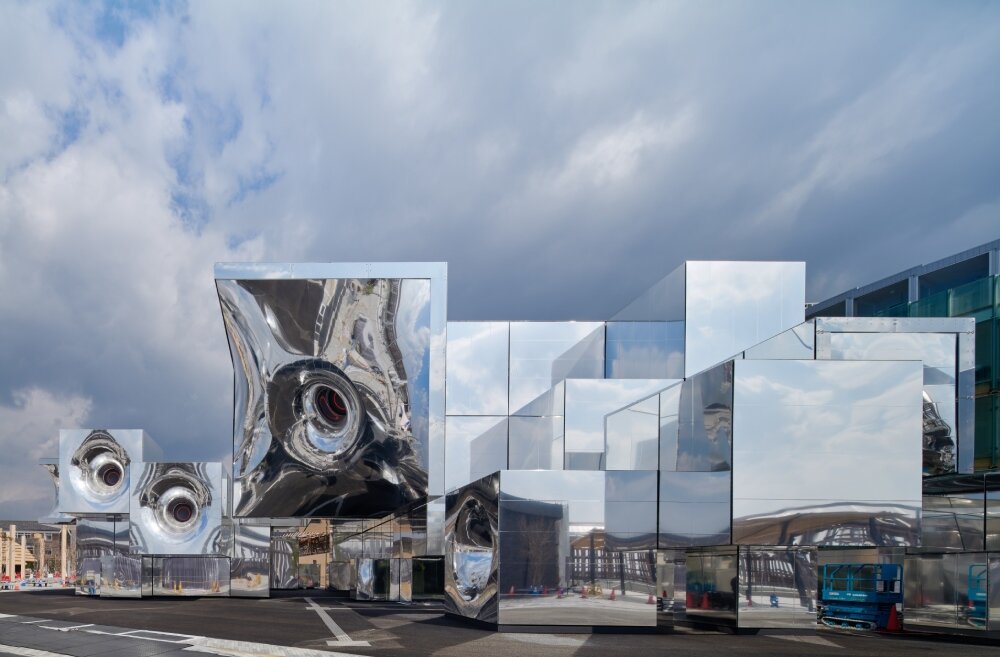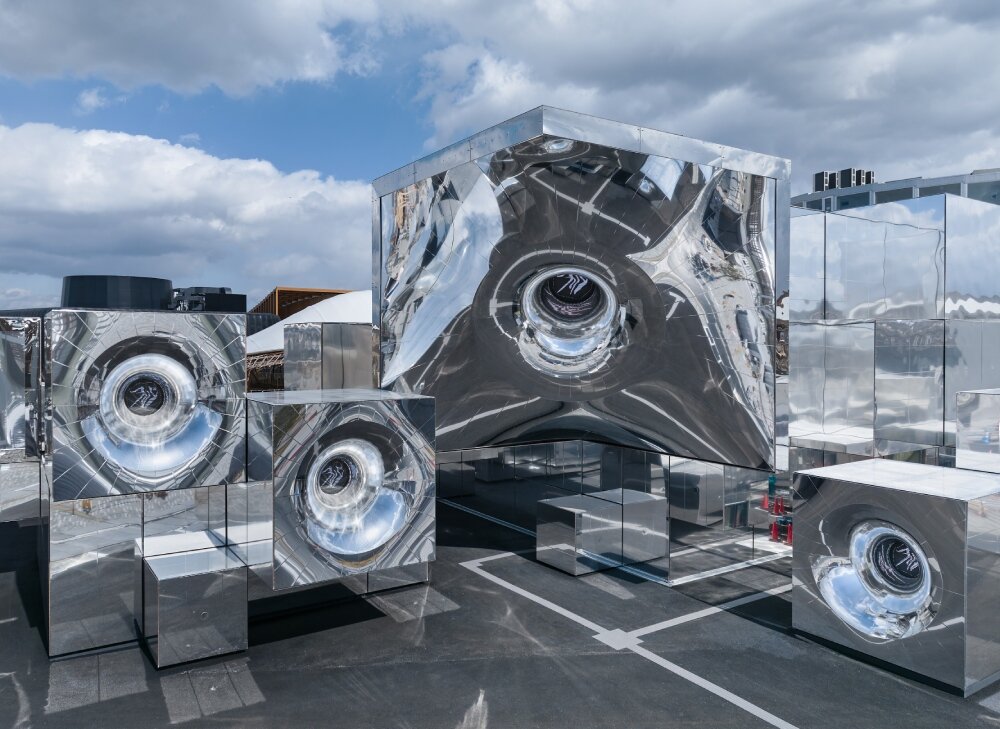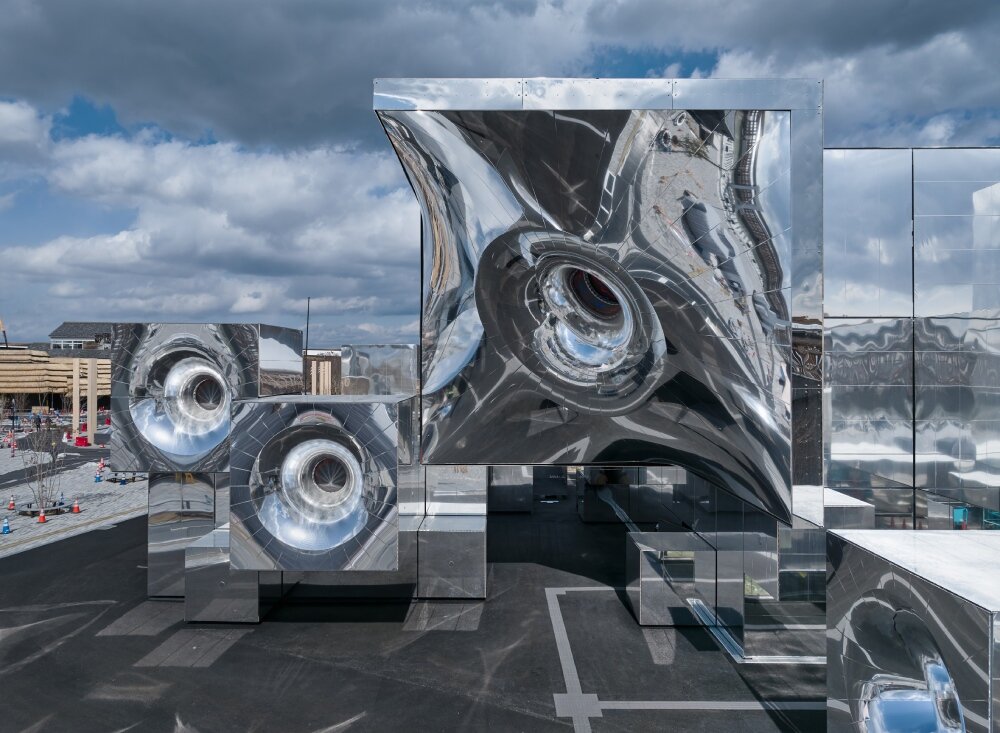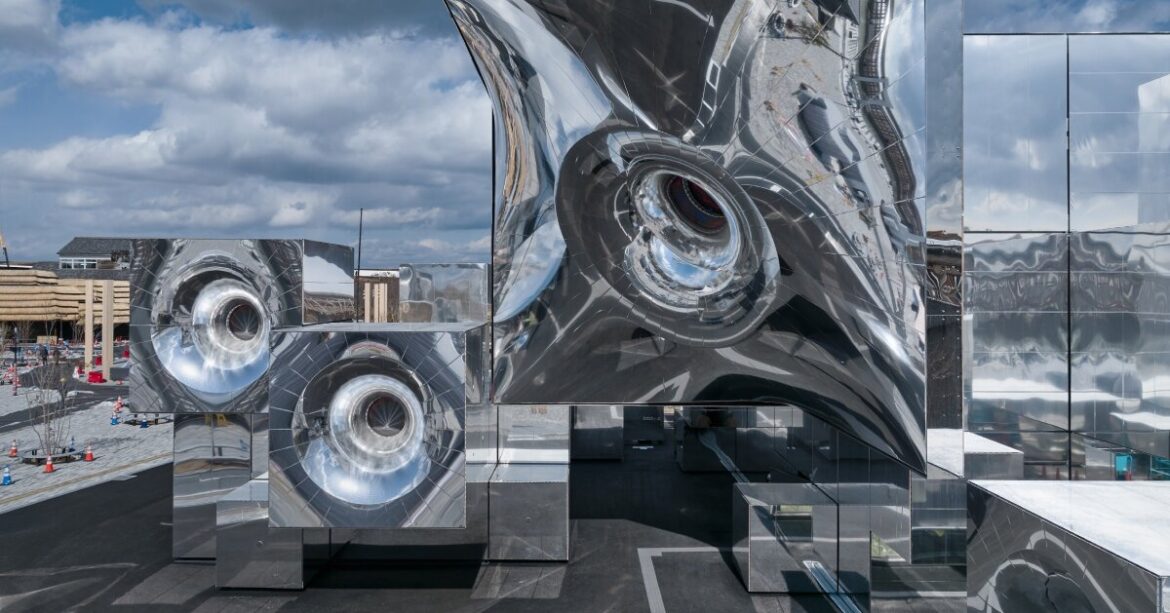null² presents an interspace at expo 2025 osaka
Among the eight Signature Pavilions at Expo 2025 Osaka, null² by Tokyo- and Taipei-based practice NOIZ presents a speculative model for how architecture might function as both interface and environment. Produced in collaboration with media artist and researcher Yoichi Ochiai, the reflective pavilion is conceived as an ‘interspace,’ occupying the conceptual territory between physical and digital, static and mutable, real and meta.
The project comprises voxel-like modules — cubic units measuring 2, 4, or 8 meters in size — assembled to house a sequence of exhibition, support, and rest spaces. Warped or geometric, these volumes are framed in steel and wrapped in a newly developed mirrored membrane, that is tensile, and responsive to environmental forces such as wind, causing the surface to move and shimmer in rhythm with its surroundings. As it visually dissolves the building into its context, this membrane plays a key role in shaping the structure’s presence as a mutable, breathing system.

all images by Daici Ano
noiz wraps the structure in a reflective membrane
The entire system of null² is designed for speed, flexibility, and reuse. Developed by NOIZ in response to a tight timeline and uncertain post-Expo future, the modular framework allows for rapid deployment, disassembly, and potential relocation. The membrane itself offers solar reflectance and thermal insulation, suggesting possible applications beyond the pavilion, for instance, as a facade strategy for retrofitting existing buildings.
Inside, the exhibition experience centers on visitor interaction with digital twins — avatars generated to mirror the user’s presence. Within certain voxels, robotic arms and embedded woofers manipulate the membranes through vibration and movement, producing a tactile, responsive environment. These dynamic interactions are intended to blur the boundary between inert material and reactive interface, framing the building as a kind of living system.

null² is among the eight Signature Pavilions at Expo 2025 Osaka
the signature pavilion extends into the digital realm
Beyond its physical footprint, null² extends into the digital realm through a participatory platform that enables visitors to engage remotely using robotic avatars, or augment their on-site visit with AR overlays. The voxel-based structure then becomes a tool for user-generated content: visitors can digitally edit and reinterpret the pavilion, creating personalized spatial iterations. With this framework, NOIZ proposes a shift in architectural authorship away from a singular vision and toward collective expression.
Taken together, these elements position the signature pavilion as an architectural operating system. Its mirrored skin, modular structure, embedded robotics, and digital extensions coalesce into a responsive environment that questions the future of space-making in a time shaped by virtuality and networked interaction.

by Tokyo- and Taipei-based practice NOIZ with media artist and researcher Yoichi Ochiai


AloJapan.com